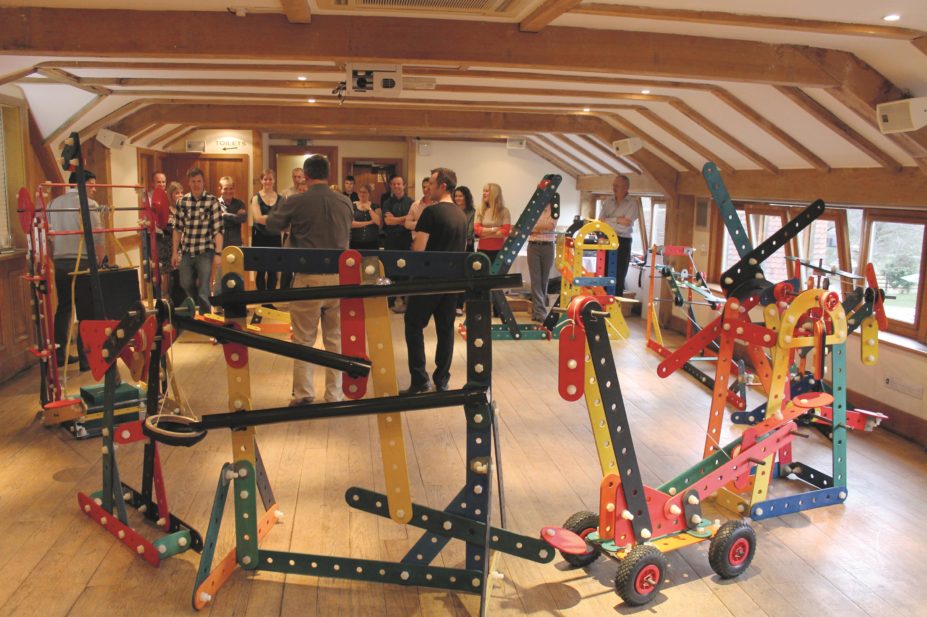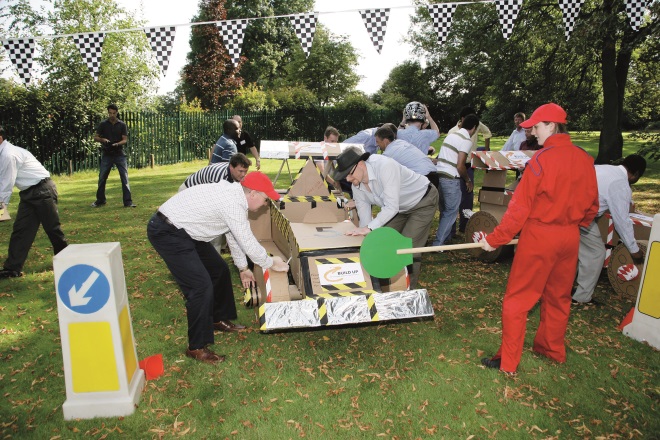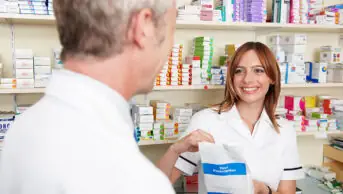
The Bluehat group
According to Bluehat Group, a team building and corporate event organiser, you can learn more about someone in an hour of play than you can in a year of conversation. The company believes that games are an important and valuable tool when it comes to engaging employees and developing teamwork within an organisation.
“An organisation’s success depends on the performance of individuals and their ability to work as an effective team. Teamwork is therefore extremely important to any organisation and can be developed to ensure all teams are high performing and more likely to achieve their goals,” explains Tim Shepley, Bluehat Group’s chief executive.
“Fun and engaging team building can be used to reward employees and celebrate successes. By providing a shared experience to your team, you create a sense of unity and increased co-operation among employees. A great team building experience enables employees to experience a sense of pride and achievement and this state of mind translates back at the workplace with a more cohesive team. Work becomes easier when all employees understand the common goal they are working towards together, problem solving becomes easier and conflict reduces,” he says.
Additional benefits for organisations include: improving employee engagement and motivation; identifying a team’s strengths and weaknesses; defining objectives and goals to work towards; breaking down barriers; and allowing open and honest communication.
Getting the team on board
Alex Mackinnon, director for Scotland at the Royal Pharmaceutical Society (RPS), is a firm believer in building a strong team. “It is an important component of professional practice, which also supports patient experience and care,” he says.
Leading by example, the RPS held a team building events for members of its Scottish Pharmacy Board earlier this year. “This was important because it helped strengthen team relationships and enabled us to use respective skills set in the most effective manner thus improving performance overall,” explains Mackinnon.
More specifically, team building helps “improve communication, makes the workplace more enjoyable, motivates the team and gets everyone on the same page”, he says, adding that it “enables goal setting and helps to identify and use the strengths of team members, improves team productivity, and enables them to practice effective collaboration with other team members”.
Team building also encourages the improvement of interpersonal skills such as communication, negotiation, leadership and motivation, he says.
According to Mackinnon, the RPS team building exercise resulted in improved ways of working — board meetings are more effective with a greater focus on developing solutions and decision making. The board now uses workshops to a much greater extent, making it more productive compared with discussing objectives at a full board.
Building relationships
Kamsons Pharmacy, a family-owned chain of 56 pharmacies in the south of England, holds the distinction of being the only large community pharmacy group to have a 100% pass rate in the June 2015 General Pharmaceutical Council registration assessment.
Mark Donaghy, professional development manager at Kamsons Pharmacy, believes that team building is vital to this success and that it has to start early. “Of course there are a number of factors involved, but an important one for us is the emphasis we put on team building in the first training day for the new preregistration trainees each August,” he says.
A major part of the day is getting the new trainees to ‘speed date’ each other with a series of ten minute one-to-one chats. “A good pharmacist needs to be able to talk to people and get to know their patients. The ability to chat confidently on a one-to-one basis is important not only professionally, but it also helps to break down the cliques of students who only sit with their friends from university,” explains Donaghy.
The company encourages close communication. “We ensure that one of the trainees leads on starting a private WhatsApp [a text communication mobile phone app] or a Facebook group so that they stay in touch, meet up for meals after training sessions and talk to each other about what they thought of their training.
“We know it is necessary that our preregistration trainees are happy at home as well as at work, so catalysing the building up of a social network to support them through the year is time well spent,” says Donaghy.
This also has professional benefits because trainees communicate with each other about learning opportunities and examination revision, for example. This focus on the foundations of team building and unity clearly pays off because nearly half of the company’s pharmacy managers completed their preregistration year with the company and they are also encouraged to network.
“Each year we have a conference for our pharmacist managers and last year we changed it from being a one-day event to being held over a weekend. We have talks from external speakers as well as from our pharmacists explaining about the innovative things they are doing. However, the social side of eating, drinking and chatting together in a relaxed environment has great benefits,” says Donaghy. The main benefit is that pharmacists build up a friendly support network that they can call upon when required, he adds.

Source:
Bluehat Group
The ’flat out Formula 1’ challenge brings a team together at a Bluehat Group event
Mixed approach
Sunil Kochhar, owner of Regent Pharmacy in Gravesend, Kent, says there are a number of elements to effective team building, but ultimately they have one objective. “My aim is to ensure we are all on the same page. It’s crucial to have buy-in from your team with what you want to achieve,” he explains.
The most valuable exercise for Kochhar’s team is an annual one-day conference held on a Sunday every October where they plan the year’s activities and objectives. “It’s important for the whole team to be there. That’s why this event is compulsory for all staff to attend. It’s part of their contract. This includes regular locums, too,” says Kochhar.
Before settling on this method, Kochhar tried more regular meetings, but not everyone was able to attend and more energy was spent talking to everyone individually. “We even tried delegating this task to team members that attended but I found that the messages got diluted or the wrong message came across,” he explains.
Clear communication is key for Kochhar’s team. “We use WhatsApp as our regular communication stream. This has worked well. From a management point you get to see who has read the messages and when,” he says.
In addition to group activities, Kochhar emphasises that team building is about focusing on individuals, so he conducts one-to-one appraisals every quarter to help build personal development goals and objectives.
“Experiment with different methods of team building. However, try to have a mixture of communication streams — but not too many,” advises Kochhar. “I would definitely encourage all pharmacy teams to hold an annual conference. I have initiated a couple for local pharmacies and am happy to consult and deliver the first one for anyone who’s interested.”
Facilitating fun
Independent pharmacy chain Day Lewis also facilitates team building throughout its company: “The nature is not overly prescribed. Instead, we facilitate teams to join together to have fun in and outside the work place,” says Jay Patel, company chief information officer and director of Day Lewis.
The company holds an annual charity day. Teams have the choice to decide which charity and what activity they wish to pursue and the Patel family pledge to double the amount of money raised by each team — in 2015 they raised £100,000.
The annual conference is also a team building exercise where teams from across the company’s 280 pharmacies spend a weekend together in London for training, an awards ceremony and a gala dinner.
Every month, all 200 employees from head office, including the chief executive and warehouse team, attend a company sponsored lunch together. “This encourages everyone to bond with each other,” explains Patel. This approach seems to be working because employee satisfaction levels in the most recent survey were 93%.
“Team building should be fun and involve participation with people interacting with each other. It is also important to team up individuals who interact the least with each other so as to bring fringe members of the group back into the fold,” advises Patel.
Overcoming barriers
Deciding to engage with team building activities is one thing, the reality of making it happen can be another. For Kochhar, finding the time for team building while everyone is trying to do their day job was the main challenge. “Training during normal working hours is almost impossible in pharmacy. We need protected learning time,” he says.
Additional challenges included trying to get all the team together in the one place: “Many of us recruit part-time staff from our local community who often cannot spare extra time out of hours because of family commitments.” However, he is a firm believer in forward planning, which enables staff members to make plans and arrange childcare if required.
For Donaghy, too, it is not always plain sailing. “Occasionally individual pharmacists may not want to go to meetings with their peers and it is important to spend time to discover what their actual barriers are,” he explains. “Sometimes it can be issues as simple as arranging transport and reassuring them as to the format of the training so that they are comfortable with it.”
Specialist companies can create bespoke events to suit your needs, but team building is also about the less formal approach: continuous communication, socialising, education and individual support where required.
Shepley concludes: “The greatest benefits come if individuals adapt their focus and behaviour on a daily basis when back in the office environment. Just imagine if your entire workforce worked more cohesively, more smartly and more creatively. What difference that would make in the short and long term.”
Get involved
If you are interested in team building and would like to see it included in future local practice forum meetings, email elspeth.bridges@rpharms.com.
Reading this article counts towards your CPD
You can use the following forms to record your learning and action points from this article from Pharmaceutical Journal Publications.
Your CPD module results are stored against your account here at The Pharmaceutical Journal. You must be registered and logged into the site to do this. To review your module results, go to the ‘My Account’ tab and then ‘My CPD’.
Any training, learning or development activities that you undertake for CPD can also be recorded as evidence as part of your RPS Faculty practice-based portfolio when preparing for Faculty membership. To start your RPS Faculty journey today, access the portfolio and tools at www.rpharms.com/Faculty
If your learning was planned in advance, please click:
If your learning was spontaneous, please click:
You may also be interested in

ICBs should fund protected time for community prescribers, urges report

More than one-quarter of NHS trusts and boards do not provide protected learning time in job plans for hospital pharmacists
